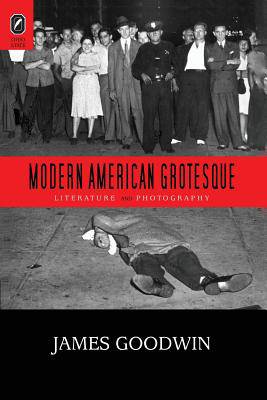
- Afhalen na 1 uur in een winkel met voorraad
- Gratis thuislevering in België vanaf € 30
- Ruim aanbod met 7 miljoen producten
- Afhalen na 1 uur in een winkel met voorraad
- Gratis thuislevering in België vanaf € 30
- Ruim aanbod met 7 miljoen producten
Zoeken
€ 45,95
+ 91 punten
Omschrijving
Modern American Grotesque by James Goodwin explores meanings of the grotesque in American culture and explains their importance within our literature and photography. What Flannery O'Connor said in the 1950s of American mass media-that the problem for a serious writer of the grotesque is "one of finding something that is not grotesque"-is incalculably truer today. Ask people what they find grotesque in the national scene and many will readily offer examples from tabloid journalism, extreme movie genres, reality shows, celebrity news, YouTube, and the like. As contemporary life is increasingly given over to such surface phenomena, it is an appropriate time to examine the more deeply rooted places of the grotesque as a literary and visual tradition over the last full century. A lineage of the modern grotesque evolved in the fiction of Sherwood Anderson, Nathanael West, and Flannery O'Connor, and the photography of Weegee and Diane Arbus. Each of these artists adopts the grotesque in order to recontextualize American culture and society and thereby to advance an attitude toward our collective history. To understand the deep structure of the grotesque Goodwin's book calls upon contexts that involve visual aesthetics, theories of comedy, prose stylistics, the technology of photography, ideas of reflexivity, and concepts of racial difference.
Specificaties
Betrokkenen
- Auteur(s):
- Uitgeverij:
Inhoud
- Aantal bladzijden:
- 238
- Taal:
- Engels
Eigenschappen
- Productcode (EAN):
- 9780814252352
- Verschijningsdatum:
- 29/05/2015
- Uitvoering:
- Paperback
- Formaat:
- Trade paperback (VS)
- Afmetingen:
- 152 mm x 229 mm
- Gewicht:
- 353 g

Alleen bij Standaard Boekhandel
+ 91 punten op je klantenkaart van Standaard Boekhandel
Beoordelingen
We publiceren alleen reviews die voldoen aan de voorwaarden voor reviews. Bekijk onze voorwaarden voor reviews.











